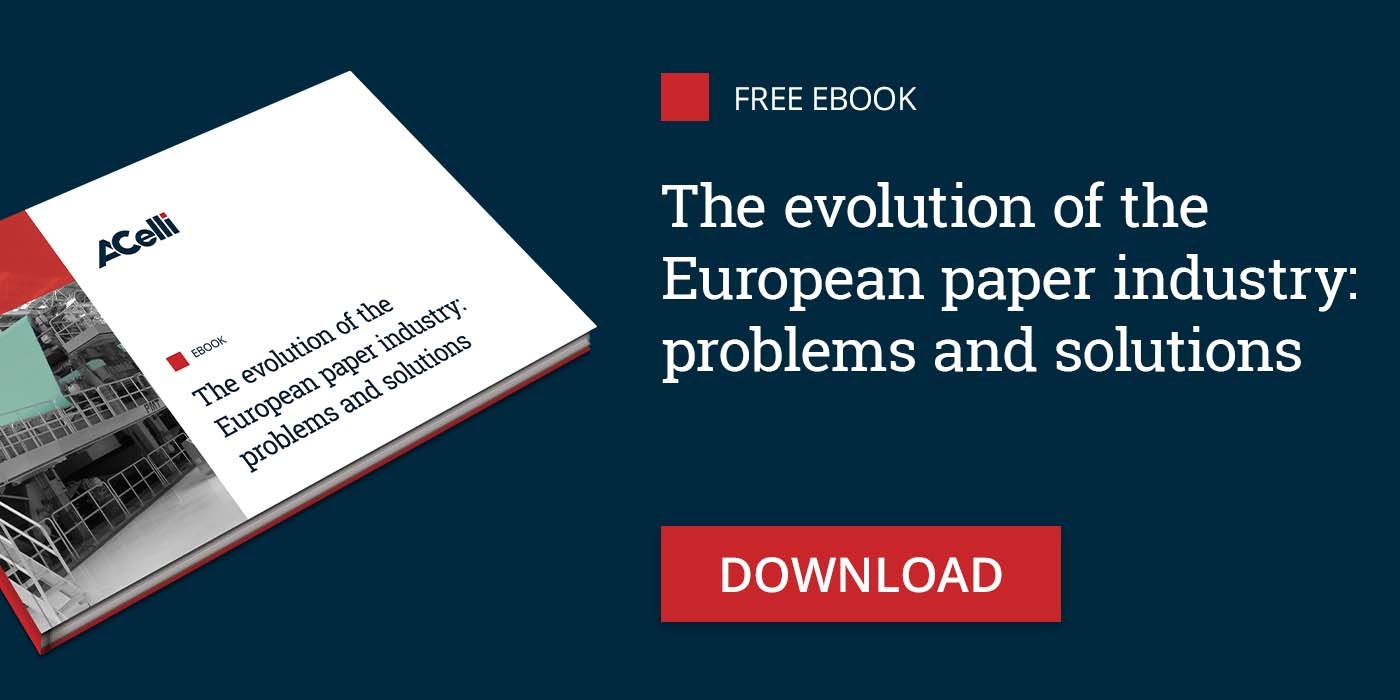It is an undisputed fact that until the 1990s the production of paper for newspapers and magazines played a leading role in the Italian paper industry. With the arrival of the Internet and the digitization of documents, however, habits have changed. However, new opportunities have arisen in other areas, such as in the cardboard and packaging sector. In order not to miss them, it is possible to resort to a conversion of the existing plants.
The collapse of the printed media
Assocarta currently segments the sector into four large families: papers and cardboards for packaging, papers for hygienic and sanitary uses, papers for graphic uses and other types of papers and cardboards. The packaging sector dominates (52% of the total), followed by papers for graphic uses (22%), those for sanitary uses (19%) and other papers (7%). A subdivision that clearly reflects the trend in paper requests from users in recent decades.
The print media sector, which dominated the scene until the 1990s, is in fact the victim of a progressive contraction. This is the effect of the affirmation of the Internet, which today represents the main source of news, according to data collected by Reuters in its Digital News Report 2022 in 12 countries (including Italy). In our nation, 75% of people search for news online. The preferred sources among the media are the portals of the main journals and televisions. However, Google and Facebook are by far the masters, while young people between 17 and 25 get information mainly on Tik Tok.
The result is a steep drop in sales of newspapers and magazines at newsstands. An example for all: in the early 1980s, the “Corriere della Sera” journal printed around 723,000 copies every day. In January 2023 ADS data indicate that the number of copies printed had dropped to 207,000 and those sold were 135,000. In practice, approximately 35% of the print run is sent directly to pulping.
Having a a large number of copies returned, still packed and never browsed, is a strategy that some publishers follow in order to take advantage of state subsidies. In fact, it is established by law that publishing houses can obtain support if they exceed a certain circulation threshold, regardless of the amount sold. And when going through a difficult period, financial help is more welcome than ever.
Periodical publishing shows even more striking declines. For example, according to ADS data, "Sorrisi e canzone TV", the Italian weekly with the largest circulation, went from 826,000 copies printed in November 2009 to 450,000 in November 2022. The reduction exceeds 45%: the numbers speak for themselves.
A crisis accentuated by expensive energy
Unfortunately, to further complicate the picture, the beginning of the war in Ukraine caused a very difficult political and economic situation, which led, among other things, to a rise in energy costs. the energy-intensive paper industry requires large quantities of electricity and gas, and has therefore found itself facing a serious problem with important repercussions on costs.
As regards Italy in particular, there are great fears about the consequences that any prolongation of the situation could have in the medium term for the plethora of small companies, many family-run, which make up the national paper industry, especially in terms of possible loss of competitiveness. For Italian paper mills it may be necessary to apply high prices, inducing customers to turn to other suppliers, with the risk of no longer being able to recover the ground lost against, for example, German paper mills - for several years the driving force behind the paper sector of Old Continent – or the Chinese ones, which are the world's leading producer.
An opportunity to be seized
It should also be emphasized that a complicated situation such as that created in the face of the Covid-19 pandemic has had a double consequence for the paper industry. On the one hand, it was absolutely negative because of the difficult conditions under which it forced us to work and try to fulfill orders, while on the other it opened up new opportunities. These regards the important development of the online sales market, both in terms of "classic" e-commerce and in terms of delivery (especially of catering products).
A recent survey by Casaleggio Associati shows that in Italy 47.1% of people aged between 16 and 64 shop online at least once a week. According to data collected by Netcomm and Comieco, e-commerce involves over 31.5 million deliveries every month and the number is constantly increasing. A figure that translates into as many millions of packages.
This trend has given a new impetus to the production of packaging paper and has led some companies that had found themselves in difficulty to convert their machinery in order to take advantage of the situation and be able to survive. An example comes from a historic name like Burgo, which converted the paper mills of Avezzano and Verzuolo from the production of graphic paper to that of cardboard for recycling and packaging. In particular, the Verzuolo plant has gone from producing 400,000 tonnes of coated paper for magazines, catalogs and brochures to 600,000 tonnes of corrugated cardboard a year, becoming one of the largest plants in Europe.
A further increase in the production of cardboard packaging is also due to the increasing attention to the environment, which has led to a decrease in the use of plastics. It is therefore no coincidence that today the packaging sector contributes more than half of the global turnover of the paper industry: converting or renewing one's machinery to produce this type of material also represents the wisest choice for any paper company.
Precisely in this context the acquisition of PMT by A.Celli fits in, which is therefore today able to intervene on the production lines for the rebuilding of some of their sections, optimizing the processes and improving their overall efficiency, or for the conversion of these lines to other types of production. All with the aim of making paper companies, large or small, more modern and competitive in relation to the various market scenarios.

